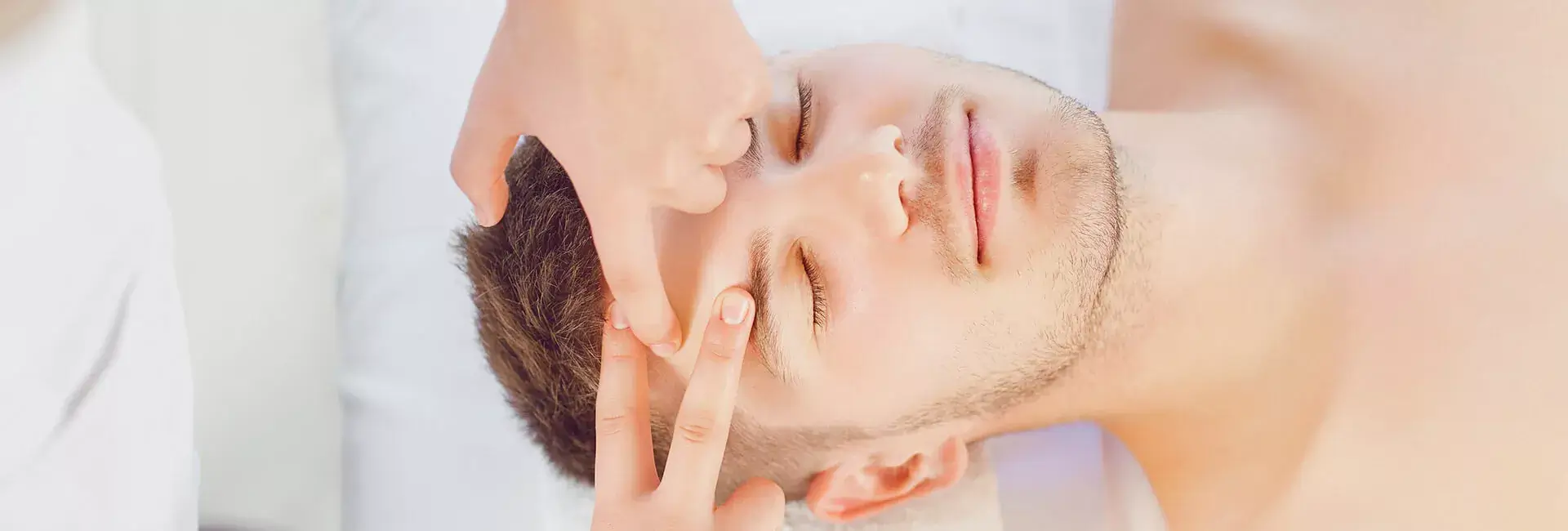Reflexology is a form of massage that is applied to the feet or face. It’s based on the concept that these areas of the body are connected to different systems and organs in the body, and by relieving stress and tension, we can enjoy health benefits and improved well-being through healing and regeneration. But how does it work and what techniques are used during a reflexology session?
How Does Reflexology Work?
A non-invasive complementary therapy, reflexology can help to enhance relaxation and improve well-being by reducing stress and building up resilience. As a touch therapy, it works on the theory that specific points on the feet, lower leg, hands, face and ears all correspond with different areas of the body. When a reflexologist applies pressure to these areas, it can stimulate healing and regeneration in other areas of the body.
Reflexology promotes self-healing by focusing on the body’s natural ability to balance and repair itself. Like a massage, it can relax and calm the nervous system. Some studies suggest benefits like pain relief, improved mood, and stress reduction.
Is Reflexology Suitable for me and my Condition?
Since it’s a non-invasive treatment and comfortable to receive as a treatment, it’s considered to be very safe. So, even if you have been diagnosed with a serious health condition, you should be able to enjoy a reflexology session. However, if you’re concerned or have any questions, we recommend you speak with one of our qualified reflexologists.
Reflexology can be received by people of all ages, from babies and women during pregnancy through to those receiving end-of-life care and all in between. However, you shouldn’t have treatment if you’re recovering from an injured foot, if you have gout or if you have blood clots, as the treatment can affect blood flow.
What to Expect During a Reflexology Treatment:
- Initial Consultation and Consent: Your first visit starts with a conversation about your health history and a consent form for treatment.
- Foot (or Hand/Ear/Face) Mapping: The reflexologist uses their hands to apply pressure to specific reflex points on your feet (or hands, ears, or face depending on the chosen reflexology technique).
- Pressure Variations: Expect some variations in pressure during the treatment. While some areas may feel firm, the discomfort is temporary and designed to be relaxing overall.
- Comprehensive Treatment: The reflexologist will cover the entire relevant area throughout the session, potentially revisiting certain points for emphasis.
- Treatment Course: Depending on your individual needs and the reason for seeking treatment, multiple reflexology sessions may be recommended.
How Will I Feel After a Reflexology Session?
Reflexology is relaxing for most people and after one or two treatments, you should find that your body starts to respond in a noticeable way to the techniques used during your appointment.
Some people find that they can feel a little lethargic or nauseous after reflexology, but these side effects are usually transitory and tend to subside quickly. It’s useful to speak with your reflexologist about how you feel after each session so that they can tailor future sessions to you.
Key Takeaways
Reflexology is a complementary treatment that can be particularly beneficial to those with anxiety and tension or struggling with joint pain. It’s a relaxing therapy that can ease stress in the body and bring the body back into balance so it can heal itself.
At The Westway Clinic, we offer a range of reflexology services, including facial reflexology, maternity reflexology and reflexology for men. Contact us today to find out more or to book an appointment.

